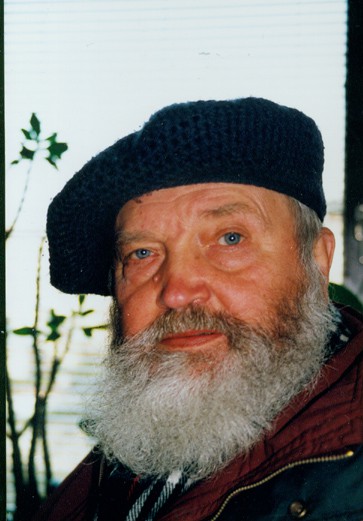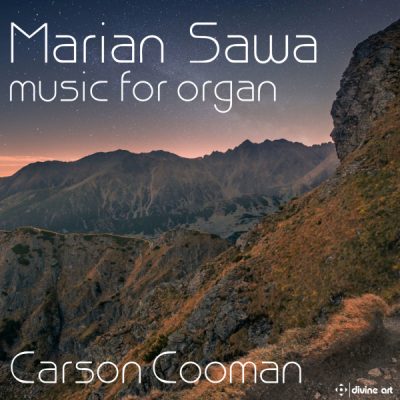Marian Sawa Recordings
Marian Sawa was born January 12, 1937 in Krasnystaw, Poland and died April 27, 2005 in Warsaw. From 1951 to 1955, Sawa studied at the Salesian Organ School in Przemyšl. Feliks Rączkowski (1906–1989), who taught organ in Warsaw, was a graduate of the Salesian School and, on one of his return visits to Przemyšl, he was very impressed by the immense talent of one of the young students, Marian Sawa. Rączkowski invited Sawa to come to Warsaw for further study, and simply in order to teach him, Rączkowski joined the faculty at the Józef Elsner Secondary Music School. Upon Sawa’s graduation in 1958, he joined Rączkowski’s organ class at the F. Chopin Music Academy. From 1956 to 1966, Sawa was the organist of the garrison church (Field Cathedral of the Polish Army) in Warsaw.
Sawa’s career as an educator focused primarily on his specialty of organ improvisation and began in 1966 at the Elsner School. In 1973 he joined the faculty of the F. Chopin Music Academy and from 1992–2003 he also taught at Cardinal Stefan Wysžnynki University in Warsaw. Sawa toured actively as an organ performer and as a clinician and juror, especially for improvisation competitions.
As a composer, Sawa wrote approximately 800 pieces in various genres. The organ forms the core of his output with several hundred solos, five concerti, numerous chamber works with organ, and various choral pieces. Building in a modernist manner on the Polish romantic musical tradition of Surzyński and Nowowiejski, Sawa continued their integration of fragments and phrases from Polish church hymns and folk music into works of serious concert music. Sawa’s personal style thus draws strongly upon traditional Polish music and Gregorian chant; to this is added influences from the Polish avant-garde, including block formal structures, cluster harmonies, and improvisatory ideas of developing
variation. His language strikes a remarkable balance between the expressive romanticism of Polish Catholic music and the aesthetic of Polish art music of the mid and late 20th century. Sawa’s personal vocabulary makes his music very recognizable, and the enormously wide range of expression achieved across his output marks him as the greatest organ composer in Polish music history and arguably the greatest Eastern European organ composer of the 20th century.
Sawa was a beloved musical figure in Polish organ circles. His works were a mainstay of all Polish organ competitions/festivals, and they were championed by a number of leading organists including Marietta Kruzel-Sosnowska (his first wife and a lifelong friend/collaborator), Józef Serafin, Valentina Maria Baginska, Jan Bartłomiej Bokszczanin, Piotr Grinholc, Leszek Mateusz Gorecki, Bartosz Patryk Rzyman, among others.
In 2006, on the first anniversary of the composer’s death, the Marian Sawa Society (Towarzystwo im. Mariana Sawy) was established by Marietta Kruzel-Sosnowska, Marcin Tadeusz Łukaszewski, and Paweł Łukaszewski to continue the promotion, editing, and publication of Sawa’s compositions.

Works by Marian Sawa
- Sequence I “Dies Irae”
- Resurrection
- Aria
- Passacaglia II
- Three Dances in Old Style
- Suite
- Fantazja Jasnogórska
- Łomza Prayer
- Sequence II “Victimae paschali laudes”





![Listen to the full suite of Marcel Dupré’s Variations Sur un Noël, Op. 20 from Alexander Ffinch’s #Expectations release today! listn.fm/expectations [in bio]](https://scontent-dfw5-1.cdninstagram.com/v/t51.71878-15/588904367_2327488161082898_8709236950834211856_n.jpg?stp=dst-jpg_e35_tt6&_nc_cat=105&ccb=7-5&_nc_sid=18de74&efg=eyJlZmdfdGFnIjoiQ0xJUFMuYmVzdF9pbWFnZV91cmxnZW4uQzMifQ%3D%3D&_nc_ohc=gQOLjaATqEIQ7kNvwFWHoE-&_nc_oc=AdnVFy-hhvXmXPBGyCKn6RB1ij_Pw8hhu69eY8lIPdtCiOum2AmAFI6gsRJodqnHmBg&_nc_zt=23&_nc_ht=scontent-dfw5-1.cdninstagram.com&edm=ANo9K5cEAAAA&_nc_gid=8zGFuhQQG800PrUUH4xdeQ&oh=00_Afn3p2qZM-DNxcFIFX9i-cyhIq-5wv4xByf0kRBBqbbnJg&oe=6947592A)

![“the ‘Manteca’ Paraphrase – a rare foray into the two-piano medium but here played double-tracked – exudes a panache of which Dizzy Gillespie would surely have approved.… [a] recital well worth investigating.” —Gramophone Magazine with high praise for Ophelia Gordon's debut release, Kapustin: Between the Lines!](https://scontent-dfw5-3.cdninstagram.com/v/t51.82787-15/598796470_18303255136283342_540941604740887837_n.jpg?stp=dst-jpg_e35_tt6&_nc_cat=108&ccb=7-5&_nc_sid=18de74&efg=eyJlZmdfdGFnIjoiRkVFRC5iZXN0X2ltYWdlX3VybGdlbi5DMyJ9&_nc_ohc=sFsWUr2jc5wQ7kNvwGNEZDI&_nc_oc=AdnMwFpIVYt06XO6Wbum_p5VAcJgSG3feKp3qXXodbhqYnZlzKFroM1cbV1WSSOHU_I&_nc_zt=23&_nc_ht=scontent-dfw5-3.cdninstagram.com&edm=ANo9K5cEAAAA&_nc_gid=8zGFuhQQG800PrUUH4xdeQ&oh=00_AfmTWrSddsUQ1dRRZpnNZQ28SpcfX0SObZizLwzlPM-tmg&oe=69476BC4)




